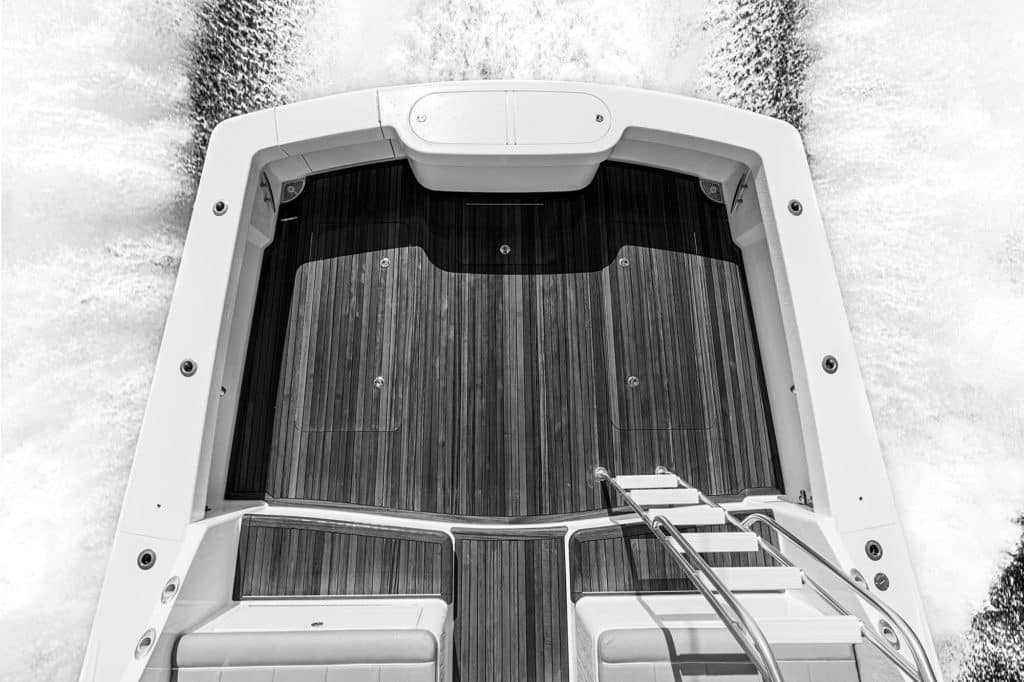
The Viking Yachts brand name is already synonymous with bluewater-capable sport-fish boats. The New Jersey boatbuilder’s 46 Billfish—the new flagship in the Billfish line that starts at 37 feet length overall—adds space and comfort.
Like its smaller siblings, the 46 Billfish has an open, salonlike command deck with a U-shaped lounge and dinette to port and a settee to starboard. There is canvas aft instead of a solid bulkhead; skippers can open it to enjoy the sea breeze or seal it and pump in air conditioning. Rod stowage is under the seating, and the command-deck design lets hardcore anglers walk in from the cockpit and relax for a moment or two without having to worry about tracking fish gore onto a carpet. Every square inch of the command deck can be washed down.
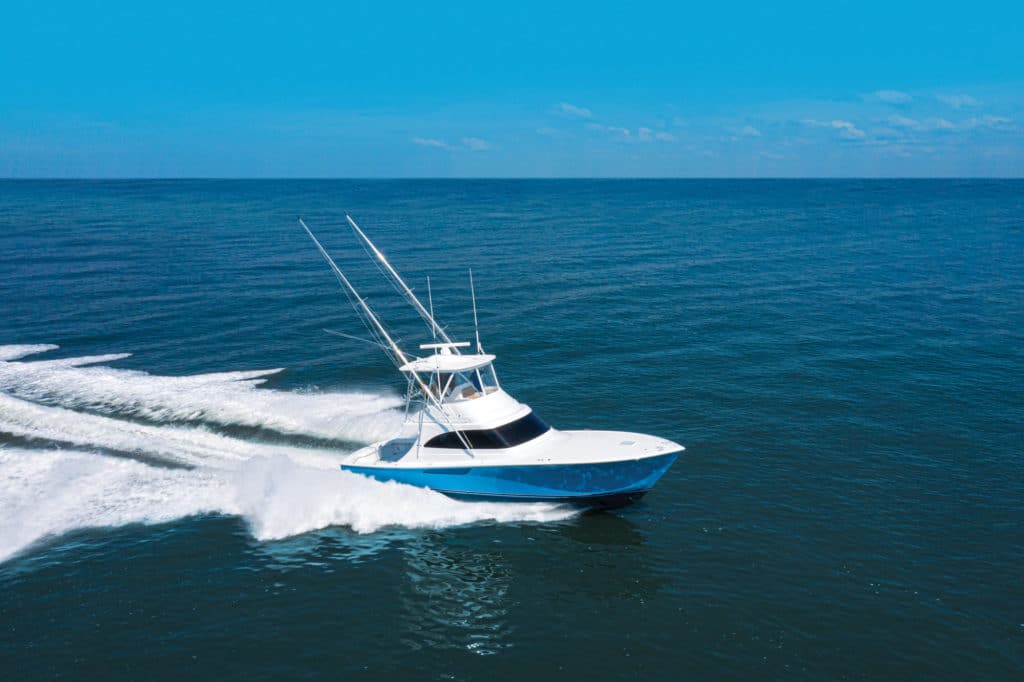
Down in the main cabin, however, is high-gloss teak cabinetry with a galley to starboard, a head with a walk-in shower to port, and a pair of over-under berths for a quick nap between bites or on overnighters. Forward, the owner’s stateroom has a queen-size island berth, a hanging locker, and an entertainment system with a stereo and a flat-screen TV.
As nice as the interior might be, the anglers among us will be spending a lot more time out in the 140-square-foot cockpit. Sure, there are tuna-size fish boxes in the deck, a transom livewell, freshwater and raw-water washdowns, and rod holders at every turn. What really grabbed me back here, however, was the split mezzanine. Fun fact: When kicking back on the port side, the bridge-deck ladder makes for a well-placed footrest. I’d wager that crew members will be vying for that spot when the long run home from the canyon begins.
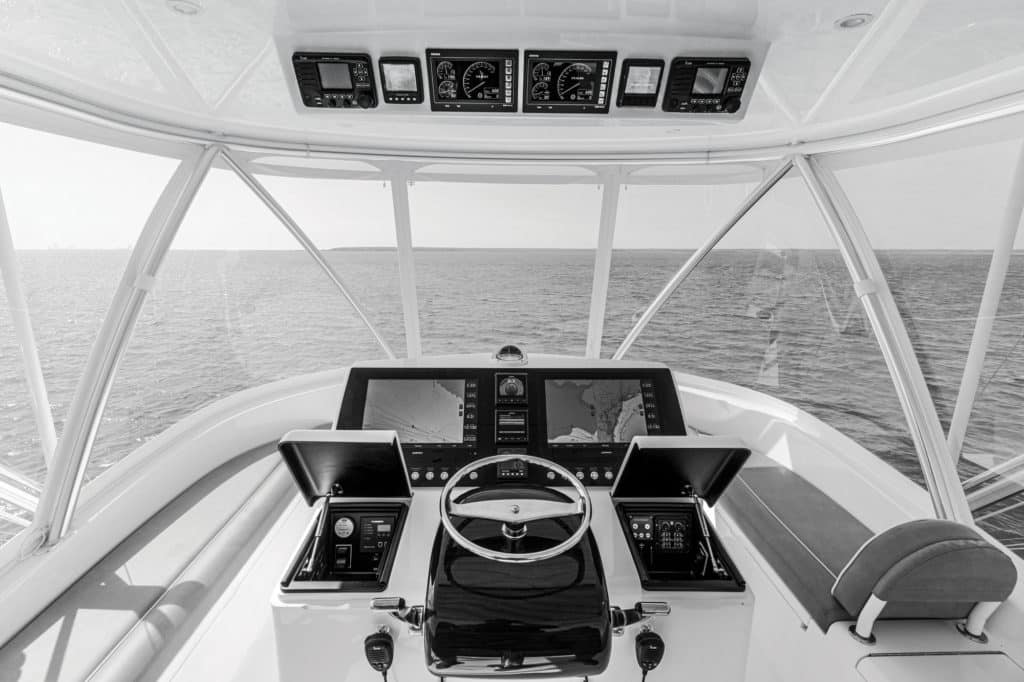
But that run won’t be nearly as long with the optional 800 hp I6-800 MAN diesels. (Twin 715 hp Cummins diesels are standard.) Cruising at 1,800 rpm, the 46 Billfish clips along at 28.9 knots. Fuel burn at this speed—the most efficient for the boat—is 44 gph, and range is 442 nautical miles, or 0.7 nm per gallon based on the vessel’s 632-gallon fuel capacity. Push the throttles down till the tachs read 2,100 rpm, and the 46 skirts across the brine at 35.1 knots while range drops to 379 nautical miles and the engines consume 64 gph. During our best speed run, I saw a top hop of 41.7 knots.
High speed is one thing, but high speed through the open ocean is an entirely different story. When we ran the 46 Billfish into the open Atlantic, there was a tight, 2- to 3-foot chop out of Absecon Inlet in Atlanic City, New Jersey. Heading directly into the slop at a normal cruise was smooth. In the mid-30-knot range, I wanted to hold on a bit, but I was comfortable and would be ready to drop lines in at the edge before I knew it. What about blasting through the seas at full tilt? That was just plain fun. The same goes for running in a beam sea, with the optional Seakeeper 6 gyro spooled up and roll virtually eliminated.
Also fun: Making this boat dance. I could back down at 8 or 9 knots with no water coming into the cockpit. Split the throttles into forward and reverse, give it a shot of juice, and the boat pirouettes like a 43,000-pound ballerina. Yes, our 46 had a bow thruster, and no, we never really felt the urge to use it.
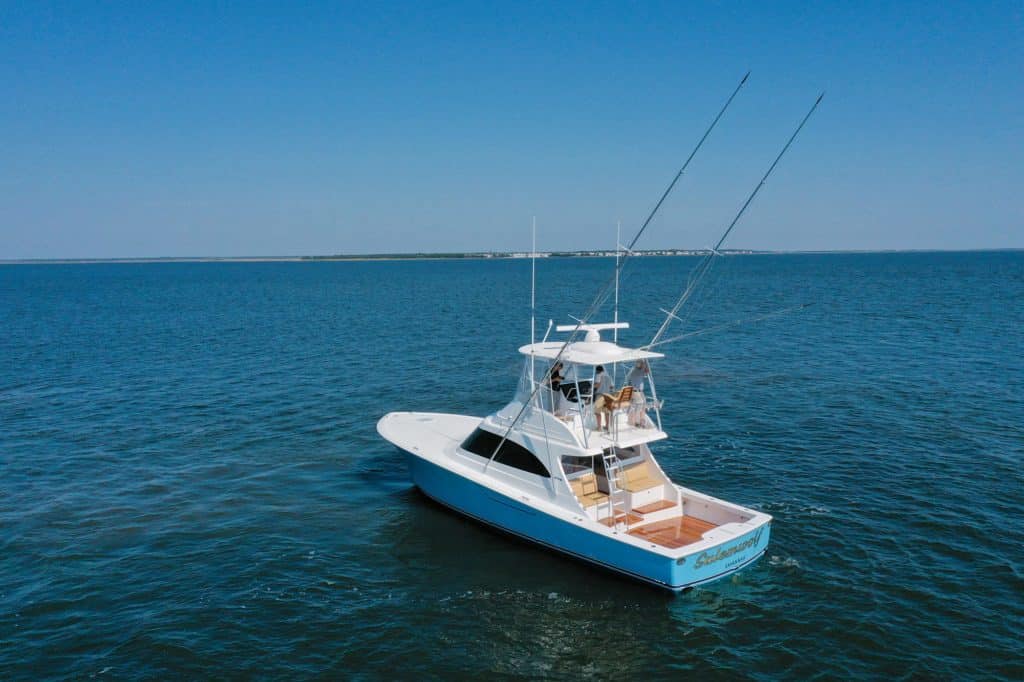
As an owner-operator, I would feel right at home. Standing at the helm, there were unobstructed views of the bow and stern, and my crew could transit safely from the cockpit to the bow with handholds stretched along the side.
And speaking of maneuvering around the boat, I also liked how the bridge was laid out with the centerline helm console and flanking port and starboard lounges. There’s enough room forward of the console for guests to move around without the captain having to move too.
If the Viking Billfish line’s past performance is any indication, then the 46 Billfish is poised to do well. It’s a canyon-capable craft with speed, comfort and a big-game pedigree.
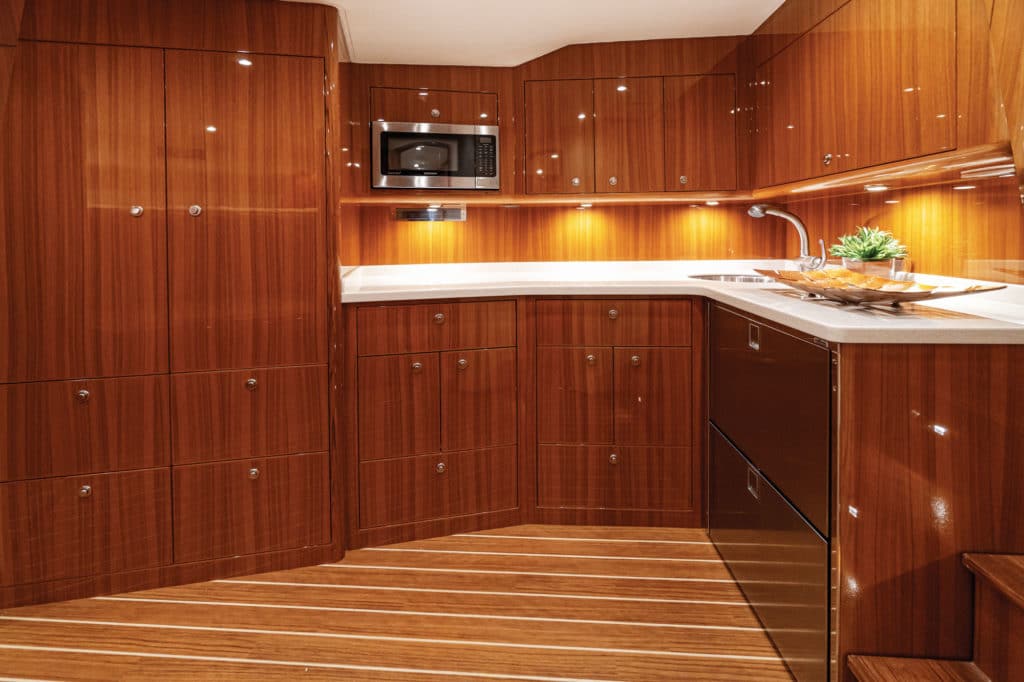
Lock Tight
Every latch, hatch and door in the cabin locks firmly in place. While running across the ocean, I took a walk belowdecks to look for things like swinging doors or drawers that were sliding open, both of which are common issues on more common boats. I found none, nor did I feel or hear any excessive vibration, rattles or creaking.
Built to Last
The 46 Billfish is constructed with many of the same yacht-quality systems and construction methods—such as Delta T engine-room ventilation—found on Viking’s larger models. The engine room itself is coated in Awlgrip. Throughout the boat, end-grain balsa and closed-cell foam are used for coring, and the hull-to-deck joint is mechanically fastened and fiberglassed shut.
Like a Glove
The forward engine-room bulkhead on the Viking 46 Billfish is a case study in yacht wiring. Every strand is well-loomed, supported and marked. Not only will wiring like this increase the boat’s reliability and longevity, but it will also make repairs and equipment replacements easier. Inside the helm console, where the console itself protects the wiring, Viking installed water-resistant connectors with protective rubber boots.
Take the next step: vikingyachts.com









